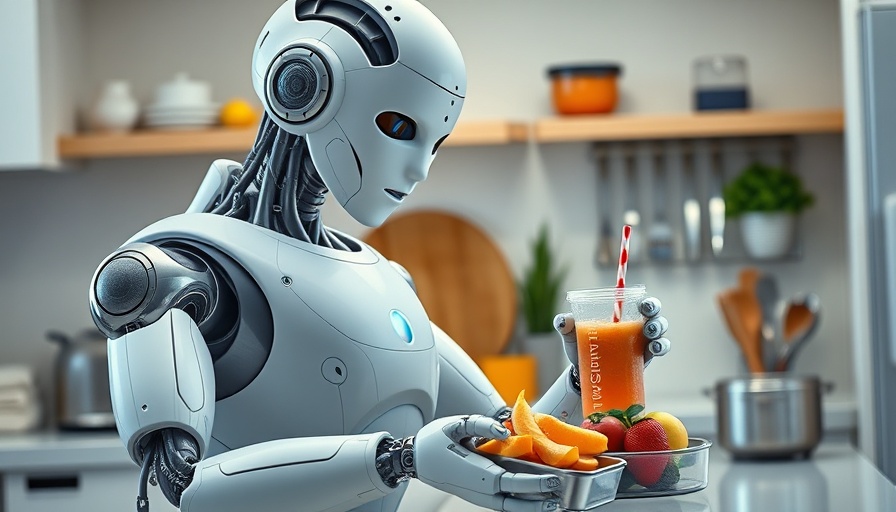
The Latest Leap Forward in Robotics: Google’s Gemini Models
In a significant stride toward a future where robots can seamlessly integrate into our daily lives, Google has unveiled two new artificial intelligence models at their latest event: Gemini Robotics and Gemini Robotics-ER. Both of these advanced models stem from the powerful Gemini 2.0 series of large language models and are tailored to enhance the capabilities of autonomous machines.
Historically, programming robotic tasks required extensive and often intricate manual input, leading to long training times and specialized knowledge. However, Google’s new approaches revolutionize this process. The Gemini Robotics model boasts capabilities that allow for the execution of complex tasks based on straightforward spoken commands, making it accessible for everyday users. Imagine simply telling a robot to fold paper into an origami shape or pack items into a bag—tasks that once demanded specialized programming can now be achieved through natural language instructions.
Bridging the Digital and Physical Worlds
The introduction of Gemini Robotics highlights the company's aim to bridge the gap between digital AI and physical actions in the real world. This vision-language-action model not only interprets verbal commands but does so by understanding its environment through multimodal data, including visual inputs from its cameras. In real-world applications, this means if a robot is grasping an object and it slips, Gemini Robotics integrates advanced replanning to adjust and complete its task without human intervention.
Carolina Parada, head of robotics at Google DeepMind, elaborated that this capability to adapt in dynamic environments is essential for robots functioning outside controlled conditions—a significant leap forward in the practical application of robotics in homes and workplaces.
Empowering Robots with Advanced Reasoning
Accompanying the Gemini Robotics model is Gemini Robotics-ER, specifically designed to enhance spatial reasoning—a critical component for executing physical tasks accurately. For instance, picking up a coffee mug entails not just recognizing the mug but also understanding its position and angle. Gemini Robotics-ER processes these intricate calculations to facilitate complex interactions with various shapes and sizes in a robot's operational environment.
Furthermore, Google has made notable advancements in flexibility: Gemini Robotics-ER is equipped to generate spatial reasoning scripts straight out of the box, simplifying the programming process for developers. When paired with human demonstrations, the model can learn even more complex tasks, allowing for a quick adaptability that outshines previous robotic models.
Transforming the Robotics Landscape
The introduction of Gemini Robotics and Gemini Robotics-ER heralds new partnerships, most notably with Apptronik, a humanoid robot startup that recently secured significant funding. This collaboration aims to develop sophisticated humanoid robots that utilize the enhanced capabilities provided by Google’s cutting-edge models. As Parada highlights, the goal is to create robots that can understand and physically interact with the world as humans do, which opens up promising avenues for various applications—from assisting in homes and offices to taking on more complex tasks across multiple sectors.
Ensuring Safety Alongside Innovation
With great advancements come significant responsibilities. Google is also focusing on establishing a framework for safety in its new robotics models, tapping into the lessons learned from previous projects. Notably, they have introduced concepts like their “Robot Constitution,” inspired by Isaac Asimov, which helps govern safer robotic actions. This way, while efficiency and capability soar, the safety of users and environments remains a primary concern.
Conclusion: The Future of AI in Robotics
As we stand on the cusp of a new era in AI-powered robotics, Google’s Gemini Robotics and Gemini Robotics-ER set the stage for potentially transformative technologies that could reshape our daily interactions with machines. For those intrigued by the potential of AI in the news, this breakthrough serves as a reminder of how swiftly technology evolves and promises to enhance our lives. The future of robotic assistance is not merely on the horizon; it's being actively created today. Stay tuned for more exciting developments in the world of AI.
 Add Row
Add Row  Add
Add 




 Add Row
Add Row  Add
Add 

Write A Comment